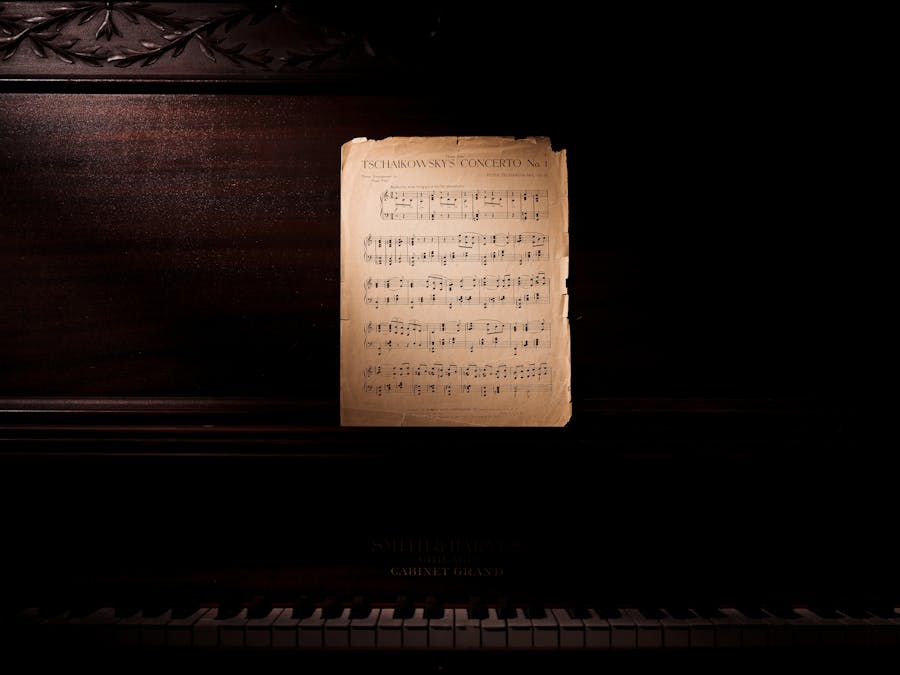 Piano Guidance
Piano Guidance
 Piano Guidance
Piano Guidance

 Photo: Charles Parker
Photo: Charles Parker
So, can you tune your own piano? Yes you can, however, it's extremely difficult! You need the right tools, a lot of patience, and should tune a junker piano first. You also, won't be able to tune it to the level of a professional.

Guitar is easier for adults to learn because it is less challenging to learn songs at the beginner level. Piano, however, is easier for younger...
Read More »
In natural perfumes, Turmeric lends an interesting warm and mildly spicy note.
Read More »If your piano is starting to sound out of tune, you may be interested in trying to tune the piano yourself. You probably realize that tuning a piano is a much more complicated process then tuning a guitar. But how hard is it really? Could an amateur do a half decent job after a days work? While I am not a piano technician I wanted to answer this quetion for myself (I thought hey, maybe tuning pianos could be an easy side hustle). To help you decide if you can tune your piano, I will give an overview the process, including the cost of the tools, and challenges/dangers involved. This is not a how-to guide. I leave that to professional technicians. This article simply addresses whether you can tune a piano yourself. For the adventurous, you can check out this detailed plan for how to tune your piano. So, can you tune your own piano? Yes you can, however, it’s extremely difficult! You need the right tools, a lot of patience, and should tune a junker piano first. You also, won’t be able to tune it to the level of a professional. To give you a sense of the energy required in the task, I read about amateurs who were able to tune their piano over the course of a week after watching after watching many hours of youtube guides. I also read of a piano technician instructor who gave 20 hour trainings to prospective technicians and after the training he thought about 35% of trainees were able to perform acceptable tunings (source found here). How long does it take for a pro to learn? One technician said it took him 6 months of frequent tuning as an apprentice before he felt consistent tuning pianos. Other benchmarks I saw floating out their were 1000 tunings or up to 3 years, before you are a proficient tuner! Let’s understand the challenges you are up against, so you can see why it takes so long to master.

Physical effects of anger The adrenal glands flood the body with stress hormones, such as adrenaline and cortisol.
Read More »
Most professional pianists practice around 3-4 hours a day, though they may have had to practice as much as 8 hours a day to get to their current...
Read More »To tune a piano you will need an electric chromatic tuner, a piano tuning lever, and some rubber mutes. electric chromatic tuner – $0-$1000. For a crude tuning you can get away with a free tuning app downloaded to your phone. For more accuracy, you will need a high quality tuner. Ideally the electric tuner would have a physical needle as this gives more accuracy, while a tuner with an electronic display may jump around more if it is poorly made. Professionals may use tuners that cost hundreds of dollars. Check to make sure that the tuner is set to “A440.” This means that the A above middle C resonates at 440 hz. This is the reference point in the standard tuning systems. For a crude tuning you can get away with a free tuning app downloaded to your phone. For more accuracy, you will need a high quality tuner. Ideally the electric tuner would have a physical needle as this gives more accuracy, while a tuner with an electronic display may jump around more if it is poorly made. Professionals may use tuners that cost hundreds of dollars. Check to make sure that the tuner is set to “A440.” This means that the A above middle C resonates at 440 hz. This is the reference point in the standard tuning systems. piano tuning lever – $50+. It is worth it to invest in a medium-high quality tuning lever. If you use a lower quality lever, you may damage the pins by rounding out the square edges. In addition, make sure to purchase a lever that will fit your pins. Typically tuning pins come with a size marking of “#2”, but you can measure the diameter and find its corresponding size here. It is worth it to invest in a medium-high quality tuning lever. If you use a lower quality lever, you may damage the pins by rounding out the square edges. In addition, make sure to purchase a lever that will fit your pins. Typically tuning pins come with a size marking of “#2”, but you can measure the diameter and find its corresponding size here. Rubber Wedge Mutes -$1+. Some keys have two or three corresponding strings. In this case you need to dampen some strings so you can accurately tune the rest. Some keys have two or three corresponding strings. In this case you need to dampen some strings so you can accurately tune the rest. Other tools. You may need a light source and a screwdriver to effectively access the inside of the piano.

Giving a teacher a bottle of wine or a gift card for alcohol is completely acceptable. Jun 27, 2013
Read More »
However, most people agree that cello is more difficult than the guitar. It requires very specific postures, tuning, and techniques. Guitar is...
Read More »
You'll find the minimum octane rating in the owner's manual, and cars that require premium fuel will usually say so on or near the gas cap, and...
Read More »
Pianos cover all 88 notes of the musical scale, unlike other instruments, offering an incredible, unparalleled range. Pianos go higher and lower in...
Read More »
As a general rule, you should spend between $400 and $1000 on a digital piano for an instrument suitable for beginners to intermediate players to...
Read More »
QWERTY (/ˈkwɜːrti/) is a keyboard layout for Latin-script alphabets. The name comes from the order of the first six keys on the top left letter row...
Read More »